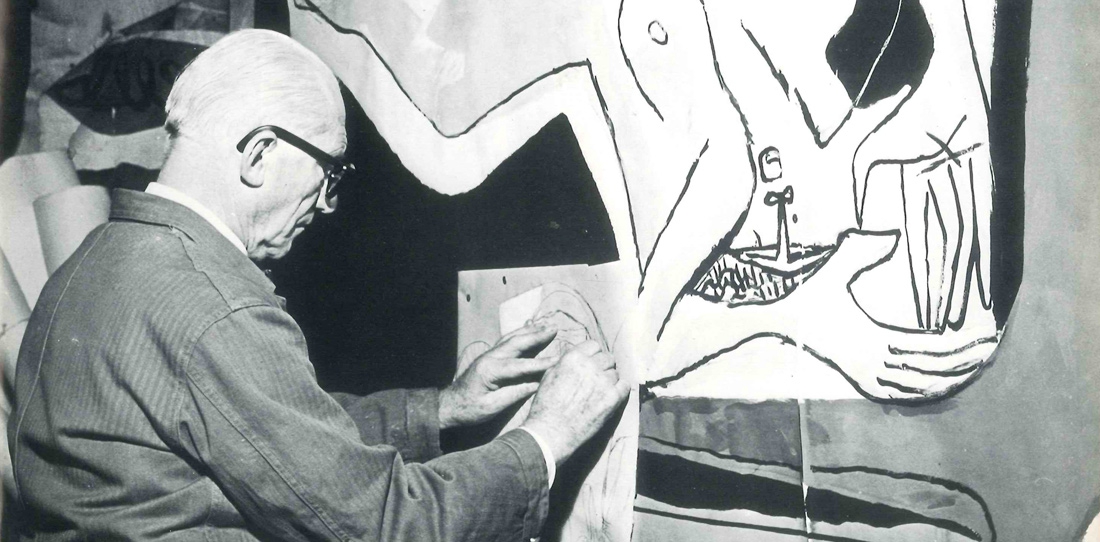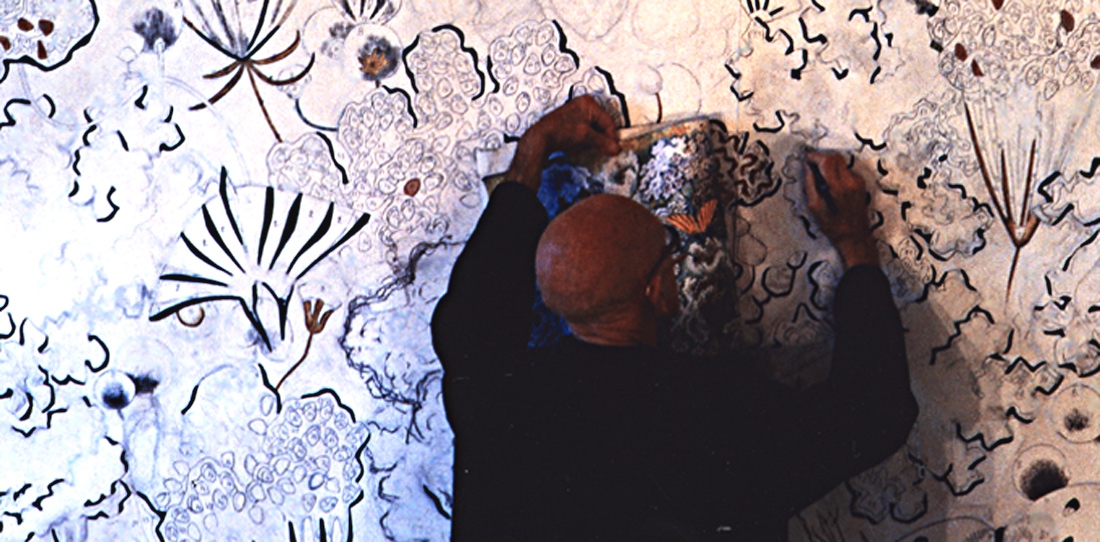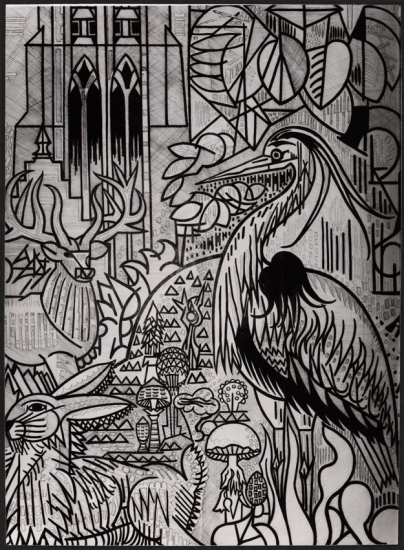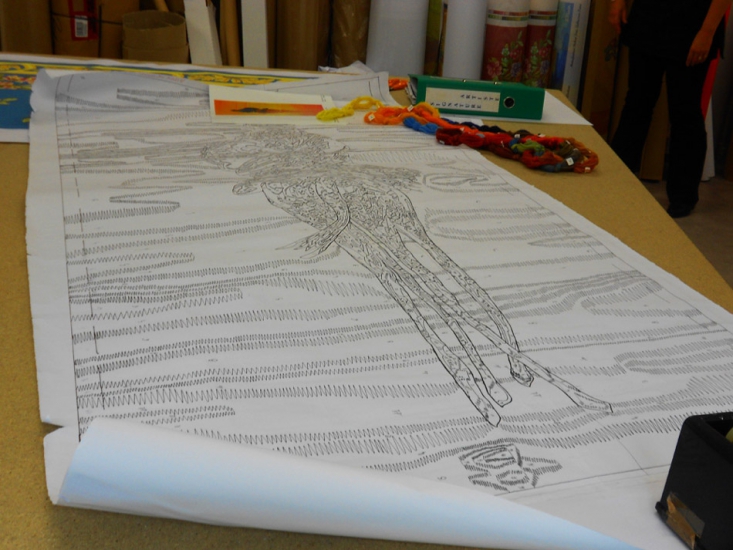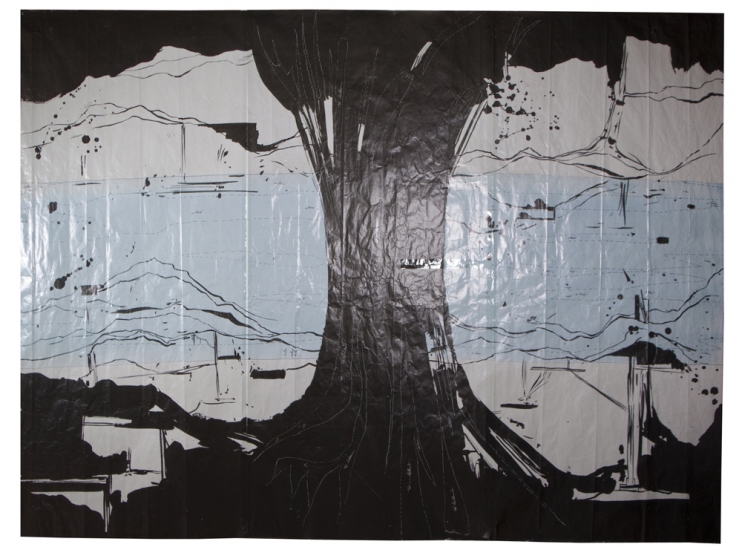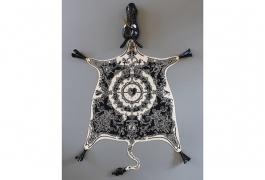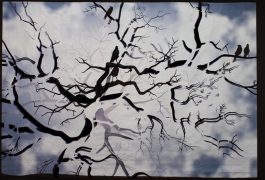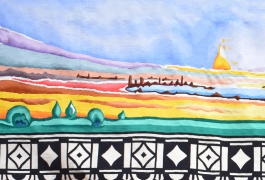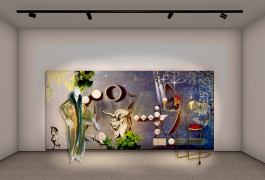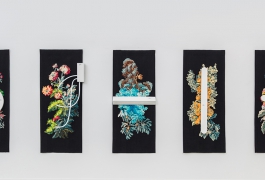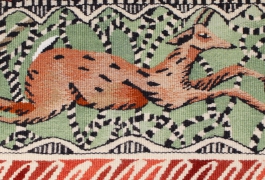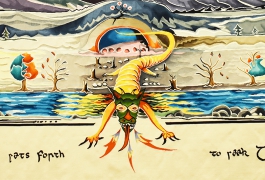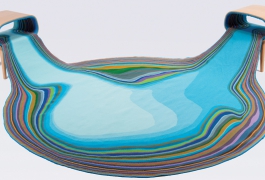“Think wool”: the cartoon painter
The cartoon painters are the masters of the graphic language of the tapestry. They execute the “cartoon” (or “carton”), which constitutes the working material of the weavers: it is a model, the work of an artist adapted to the dimensions of the future tapestry – whether it is wall-hanged, on the floor or an upholstery. Slid under the warp yarn of the low warp loom, it guides the craftsmen all along the weaving process.
“As ancient as it, I doubt that neither the weaver’s technique nor the looms can be changed […] but the painters can vary the style in creating the cartoons, the form, the subject, the colors […] The eras which have increased the amount of colors in one single wall-hanging, have not increased their wealth to do so. Nowadays the excessive austerity which aims towards simplicity, risk to drive us to a poverty which is retrieved only through the input of weaved material, but without taking advantage of the colored vibrations and the velvety and warm values of the wool. It demands a particular writing […] which is not at any time neither a wall-painting, nor an enlarged easel canvas. […] And when the weaver collaborates to the establishment of a work, the collaboration needs to be complete, and the painter must think “wool”, that is to say his cartoon must be exclusively conceived toward this aim and should not be executed unless by using this method, and he should make the most of what its wonderful qualities can bring him.” Louis-Marie Julien (1904 – 1982)
Originally, the painters provided models in the form of oils or gouache, or in grisaille painting leaving to the care of the ateliers the adaptation of the sketch to the dimensions of the tapestry.
The cartoon painters transform a sketch into a cartoon, on scale with the future tapestry, left/right reversed to match with the inside out weaving. It is a rewriting of the original work, adapted to the specificity of the weaving techniques, which will give weaving indications to the weaver. This primary work to the tapestry can be considered as a mere tool, which is to be thrown away if it is too worn out by dint of being hooked under the loom, after having done a “clean” copy.
The 20th Century has transformed the way we consider the cartoon. The tapestry renovation initiated by Aubusson’s National School of Decorative Arts, and then by Jean Lurçat, modified the elaboration method of the cartoon. It allowed many artists to receive education in cartoon writing, becoming true “cartoon painters” integrating the materiality of the wool within their creation process and distinguishing themselves from the other painters, who painted only small sized sketches. From the 1980’s onwards, from mere pattern, the cartoon has sometimes earned the statue of artistic work. Some public sales have mirrored this evolution, with cartoons whose selling price sometimes exceeded the price of their weaved double.
According to the type of sketch and the will of the artist, the work method, the size and the ateliers headcount, if the person realizing the cartoon makes the weaving herself or not etc. this translation in preparation for “wooling” varies a lot. The cartoon can be more or less truthful to the original work, from a mere enlargement on scale with the tapestry with a few indications, truthful transcription of the image pattern and its colors as conceived by the artist, to a complete translation of the work, whose variations, gradation etc. are transposed into graphic codes indicating particular weaving techniques, and the colors can be replaced by numbers. Each number then matches with a shade of wool coming from a string of assortment obtained thanks to the researches of a colorist.
Nowadays, even if the cartoon makers are still skilled designers, most of those cartoons are made through numerical impressions or photographical printing.

